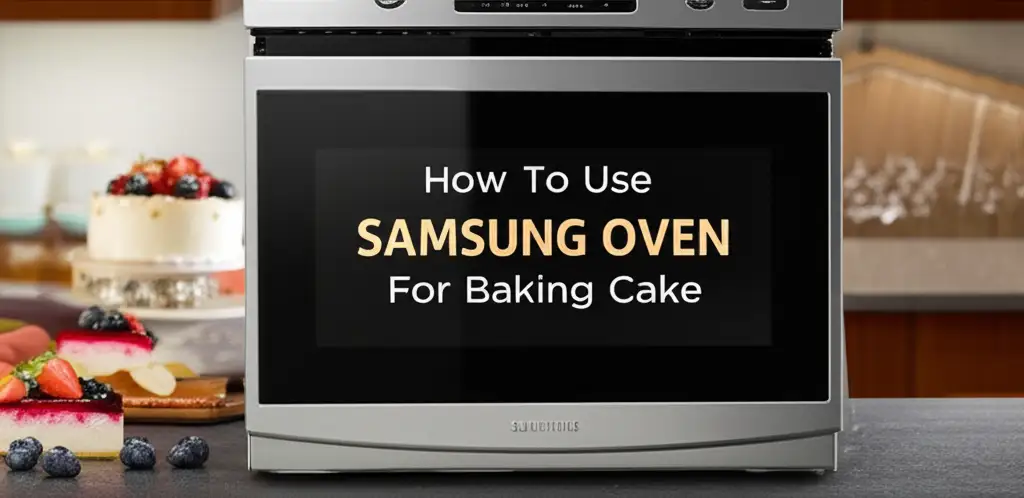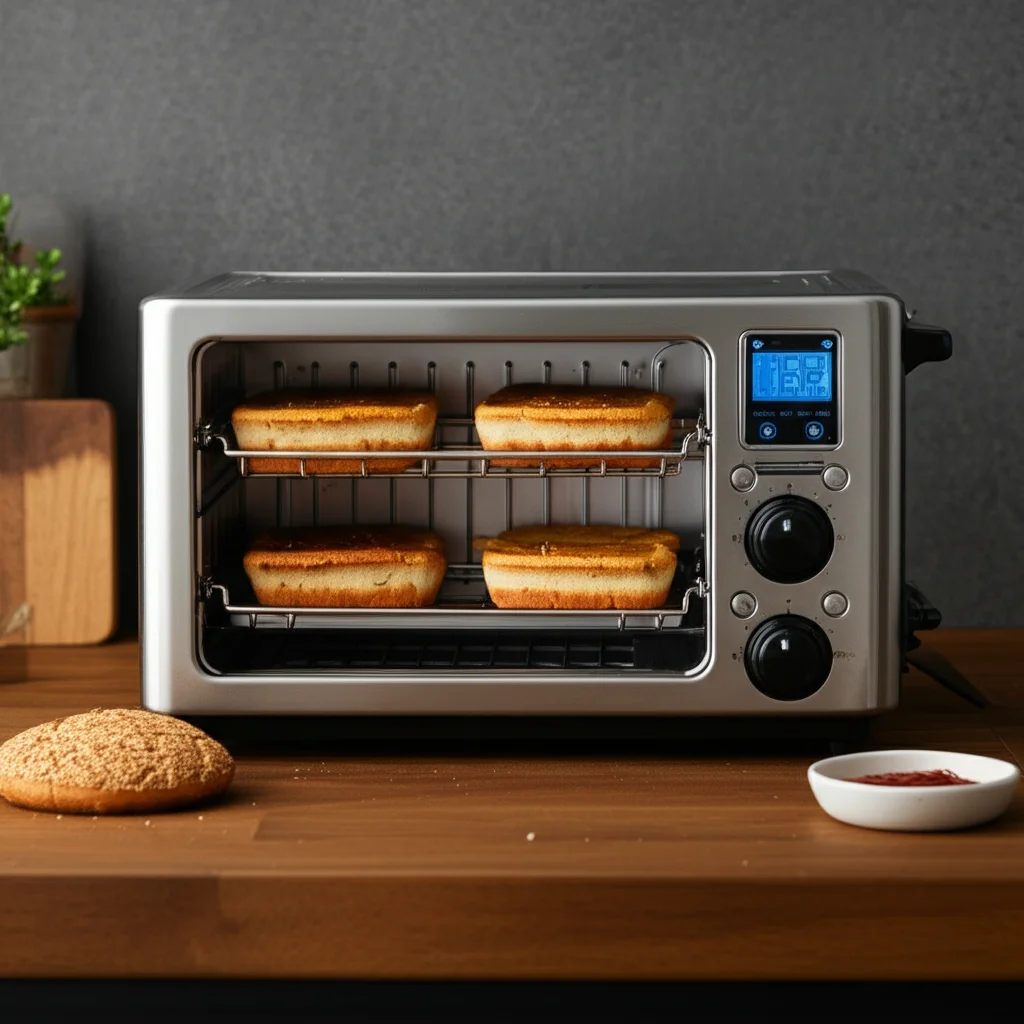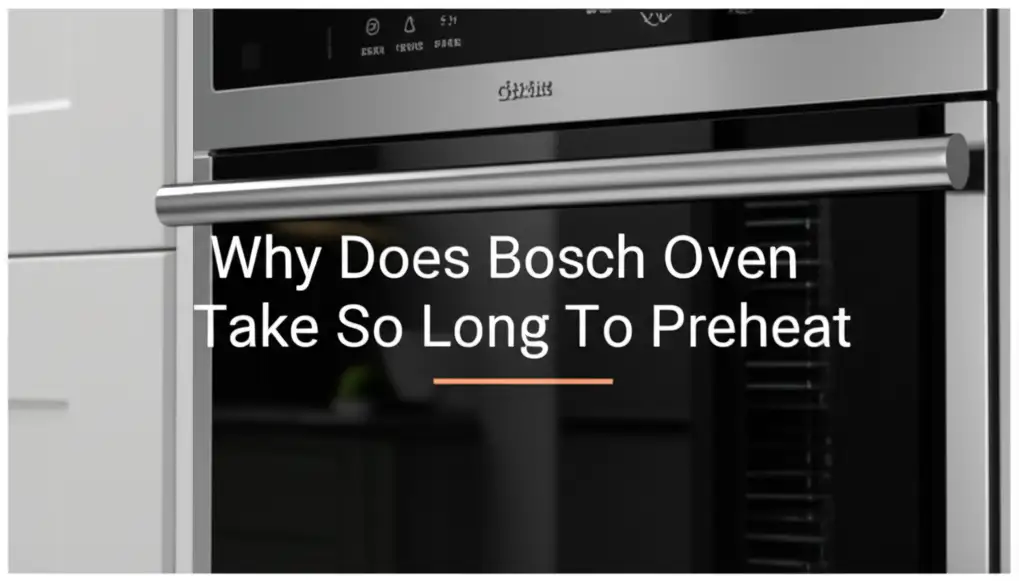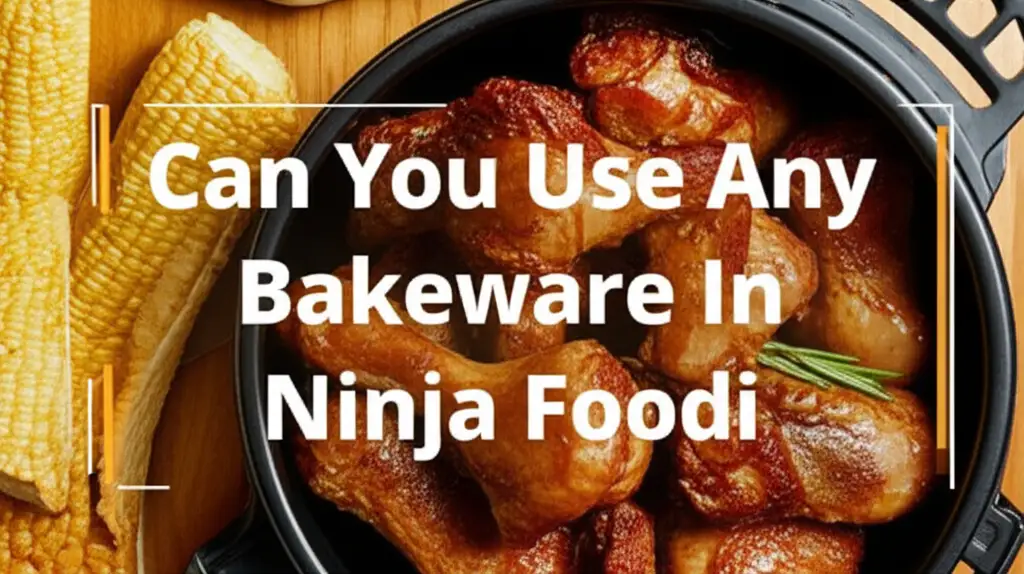· Katria Melrose · Kitchen Appliances · 19 min read
Can I Use Aluminum Pan In Turbo Broiler

Using Aluminum Pans in Your Turbo Broiler: A Safe Guide
Imagine preparing a delicious meal with less cleanup. Many home cooks wonder if their trusty aluminum pans are suitable for this convenient appliance. The question, “Can I use aluminum pan in turbo broiler?” often comes up. Turbo broilers offer quick, even cooking with their unique technology. Understanding how aluminum pans interact with this heat is important. This article provides a comprehensive guide. We will explore the safety, benefits, and best practices for using aluminum pans in your turbo broiler. You will learn how to get the best results while keeping your kitchen safe.
Takeaway
Using aluminum pans in a turbo broiler is generally safe and convenient. Keep these points in mind:
- Choose Wisely: Opt for sturdy, heavy-gauge aluminum pans.
- Ensure Airflow: Do not overcrowd your turbo broiler. Allow air to circulate.
- Monitor Heat: Aluminum conducts heat well. Watch cooking times closely.
- Acidic Foods: Avoid cooking highly acidic foods in aluminum for long periods.
- Placement: Keep pans away from direct contact with heating elements.
Clear, Concise Answer
Yes, you can generally use aluminum pans in a turbo broiler. Aluminum is heat-resistant enough for the temperatures typical in these appliances. Always select durable pans and ensure proper airflow around them for safe and effective cooking results.
Understanding Your Turbo Broiler and Aluminum Pans
A turbo broiler is a versatile kitchen appliance. It uses halogen heating elements and a convection fan. This combination cooks food quickly and evenly. The fan circulates hot air, making it similar to a convection oven. Turbo broilers heat up fast. They can reach temperatures suitable for roasting, baking, and broiling.
Aluminum pans are common in kitchens worldwide. They come in various forms. You find disposable foil pans and reusable, thicker baking pans. Aluminum is lightweight and conducts heat well. This makes it popular for many cooking tasks. Understanding how these pans handle the intense heat of a turbo broiler is important for safety and good cooking.
How a Turbo Broiler Heats Food
Turbo broilers operate differently from traditional ovens. A powerful halogen lamp generates intense heat. A fan then distributes this heat throughout the cooking chamber. This forced air circulation ensures even cooking. It also reduces cooking times significantly. The temperatures inside can climb rapidly. It is crucial for your cookware to handle this environment.
- Halogen Heat: The direct radiant heat from the halogen lamp is powerful.
- Convection Fan: This fan ensures hot air moves around the food. It prevents cold spots.
- Rapid Heating: Turbo broilers reach desired temperatures faster than many conventional ovens.
Properties of Aluminum Pans
Aluminum is a metal known for its excellent heat conductivity. It heats up quickly and cools down fast. This property is beneficial for baking and roasting. However, not all aluminum pans are the same. Disposable foil pans are thin and flexible. Reusable aluminum baking pans are thicker and more rigid. Their differing thicknesses impact how they perform under high heat.
- Heat Conductivity: Aluminum transfers heat efficiently. This cooks food evenly.
- Melting Point: Aluminum has a high melting point, around 1,220 degrees Fahrenheit (660 degrees Celsius). Turbo broilers typically operate below this temperature.
- Durability: Disposable pans are fragile. They can warp or tear easily. Thicker pans are more robust.
When considering if you can use an aluminum pan in a turbo broiler, remember these characteristics. The broiler’s high heat and convection system will interact with the pan’s material properties. This interaction determines the cooking outcome. Knowing your appliance and your pan helps you make informed choices. For more on similar appliance usage, explore if you can put aluminum pan in convection oven. This knowledge helps in understanding how different ovens handle aluminum. Also, it is useful to know if you can put an aluminum pan under the broiler in general.
Safety Considerations When Using Aluminum in a Turbo Broiler
Safety is always the top priority in the kitchen. When using aluminum pans in a turbo broiler, several factors need attention. High temperatures and the unique airflow system present specific considerations. Understanding these helps prevent accidents and ensures your food cooks properly.
Heat Tolerance and Melting Point
Aluminum has a high melting point. It typically melts at around 1,220°F (660°C). Turbo broilers usually operate in a range of 250°F to 500°F (120°C to 260°C). These operating temperatures are well below aluminum’s melting point. This means your aluminum pan will not melt during normal use. However, extreme direct heat, especially from the halogen element, can affect thinner pans.
- Direct Heat Exposure: Avoid placing thin foil pans too close to the heating element. Intense radiant heat might cause localized hot spots.
- Warping: Thin disposable aluminum pans can warp or deform under high heat. This does not pose a safety risk for melting but can affect food positioning. It might also make handling hot pans difficult.
Food Reactivity and Leaching
Aluminum can react with certain acidic foods. Foods like tomatoes, citrus fruits, and vinegar can cause aluminum to leach into the food. This is generally minimal. However, long cooking times with highly acidic ingredients might increase the amount of aluminum that enters your food. Most health organizations consider the amount of aluminum ingested from cooking to be safe. Yet, some people prefer to minimize this exposure.
- Short Cooking Times: For turbo broilers, which cook quickly, the risk of significant leaching is low.
- Protective Layers: Some aluminum pans have non-stick coatings. These coatings provide a barrier.
- Alternative Cookware: If you frequently cook highly acidic foods, consider using glass or ceramic dishes. These materials do not react with acids.
Structural Integrity of Pans
The thickness of your aluminum pan matters. Disposable foil pans are very thin. They can become flimsy when hot and full of food. This makes them challenging to handle. They might collapse or tear if not supported properly. Reusable aluminum baking pans are much sturdier. They maintain their shape better under heat and weight.
- Support Weak Pans: If using a disposable pan, place it on a sturdier metal tray or the turbo broiler’s rack. This provides necessary support.
- Avoid Overfilling: Do not overfill disposable pans. Excessive weight increases the risk of structural failure.
- Monitor Condition: Always check the pan for tears or damage before adding food.
Ensuring these safety aspects are covered allows for worry-free cooking. For general use in ovens, it’s also helpful to understand if you can put aluminum pan in convection oven. This broadens your knowledge of aluminum cookware limitations. Knowing if I can put an aluminum pan in the oven also provides useful context for various cooking applications.
Benefits of Using Aluminum Pans in Your Turbo Broiler
Aluminum pans offer many advantages for cooking in a turbo broiler. Their properties make them a convenient and effective choice for many dishes. From quick cleanup to efficient heat transfer, these pans can enhance your cooking experience.
Unmatched Convenience and Easy Cleanup
One of the biggest draws of aluminum pans, especially the disposable foil variety, is the convenience. After cooking, you can often discard the pan directly. This eliminates the need for scrubbing baked-on food. For reusable aluminum pans, they are often lightweight and easier to clean than heavier cast iron or ceramic dishes.
- No Soaking or Scrubbing: Disposable pans mean less time spent on washing dishes. This is perfect for busy weeknights or when hosting.
- Reduced Mess: Aluminum pans contain drips and spills. They keep your turbo broiler cleaner. This makes appliance maintenance easier.
- Lightweight: Aluminum pans are easy to move. They are less cumbersome than heavy stoneware.
Proper cleaning of reusable aluminum pans ensures their longevity. Learning how to clean aluminum pan effectively helps maintain their appearance and performance. If you encounter tough stains, knowing how to clean an aluminum pan that is stained becomes even more useful.
Cost-Effectiveness
Aluminum pans are generally inexpensive. Disposable foil pans are particularly budget-friendly. This makes them a cost-effective option for everyday cooking or large gatherings. You can stock up on them without a significant investment. Reusable aluminum pans are also more affordable than many other cookware materials.
- Bulk Purchases: Disposable pans are often available in multi-packs. This reduces the per-unit cost.
- Long-Term Savings: For reusable pans, their durability ensures they last for many years. This saves money compared to frequently replacing other types of cookware.
Excellent Heat Conductivity
Aluminum is an excellent conductor of heat. This property ensures that heat transfers quickly and evenly to your food. In a turbo broiler, where rapid heating is standard, this can lead to efficient cooking. The pan heats up quickly, helping food cook through without long preheating times.
- Even Cooking: Good heat distribution minimizes hot spots. It ensures your food cooks uniformly.
- Faster Cooking Times: The pan quickly reaches the cooking temperature. This contributes to the overall speed of the turbo broiler.
- Browning and Crisping: Efficient heat transfer helps in achieving desirable browning and crisping on food surfaces.
The combination of convenience, affordability, and performance makes aluminum pans a strong contender for use in your turbo broiler. They are a practical choice for many home cooks.
Choosing the Right Aluminum Pan for Turbo Broiling
Not all aluminum pans are created equal. Selecting the appropriate pan is crucial for safe and effective turbo broiling. Factors like pan thickness, size, and type play a significant role in your cooking success. Making the right choice ensures optimal performance and safety.
Gauge and Thickness of Aluminum
The gauge, or thickness, of an aluminum pan directly impacts its durability and performance. Thinner, disposable foil pans are convenient but less robust. Heavy-gauge aluminum pans, typically found in reusable baking ware, offer greater stability and better heat distribution.
- Disposable Foil Pans: These are very thin. They are prone to warping or bending under high heat or weight. They are best for lighter foods or as liners. They may not hold their shape well if full.
- Heavy-Duty Foil Pans: These are thicker than standard disposable pans. They offer more stability. They are suitable for heavier roasts or casseroles.
- Reusable Aluminum Pans: These are the thickest. They are designed for repeated use. They distribute heat very evenly and are highly durable. They are excellent for baking and roasting.
For similar applications, consider what type of pan you might use. For example, if you can use aluminum baking pan in air fryer, it shows the versatility of these pans in forced-air cooking environments. Similarly, understanding if I can use an aluminum pan in my air fryer provides insight into their general safety in compact, high-heat appliances.
Size and Fit Within the Turbo Broiler
The internal dimensions of your turbo broiler dictate the maximum pan size you can use. Ensure the pan fits comfortably without touching the sides or the heating element. Proper clearance is essential for air circulation. The convection fan needs space to move hot air around the food.
- Measure First: Before purchasing, measure the inside diameter and height of your turbo broiler. This ensures a proper fit.
- Avoid Contact: A pan touching the glass bowl or heating element can impede air flow. It might also cause localized overheating or damage.
- Leave Room for Air: Do not use pans that are too large. Leave at least an inch or two of space around the pan. This allows for efficient convection cooking.
Reusable vs. Disposable Pans
Both reusable and disposable aluminum pans have their advantages. Your choice depends on your cooking needs and preference for cleanup.
- Disposable Pans: Ideal for single-use convenience. Great for foods with messy marinades or when you want minimal cleanup. They are not designed for structural integrity with heavy loads.
- Reusable Pans: A better investment for frequent use. They are more durable and provide more consistent cooking results due to their even heat distribution. They require washing, but they last longer.
Choosing the right pan contributes significantly to the safety and success of your turbo broiler cooking. Always match the pan to your cooking task and appliance.
Best Practices for Cooking with Aluminum Pans in a Turbo Broiler
Once you have selected the right aluminum pan, following best practices ensures optimal cooking results and safety. Proper technique helps you maximize the benefits of both your pan and your turbo broiler.
Ensuring Proper Airflow and Placement
A turbo broiler relies on circulating hot air for even cooking. Obstructing this airflow can lead to unevenly cooked food or extended cooking times. Proper pan placement is key.
- Use the Rack: Always place your aluminum pan on the turbo broiler’s cooking rack. Do not place it directly on the bottom of the glass bowl. This elevates the pan, allowing air to circulate freely underneath and around it.
- Do Not Overcrowd: Avoid filling the turbo broiler with too many items or a pan that is too large. Leave sufficient space between the pan and the sides of the broiler. This ensures hot air can reach all surfaces of your food.
- Center the Pan: Place the pan as centrally as possible on the rack. This helps in achieving even heat distribution.
Monitoring Cooking and Temperature Control
Aluminum conducts heat very well. This means food in aluminum pans can cook faster than in other materials. Close monitoring is important to prevent overcooking or burning.
- Adjust Cook Times: Be prepared to reduce your usual cooking times when using a turbo broiler with an aluminum pan. Start checking for doneness a few minutes earlier than you might expect.
- Use a Thermometer: For meats, always use a reliable meat thermometer to ensure safe internal temperatures are reached.
- Check for Browning: The direct halogen heat can brown food quickly. Keep an eye on the food’s surface to prevent burning, especially with thin cuts or delicate items.
Considerations for Food Types
While versatile, aluminum pans are not ideal for all food types, particularly when combined with a turbo broiler’s intense heat.
- Acidic Foods: Limit cooking highly acidic foods (e.g., tomatoes, lemon juice, vinegar) in aluminum pans for extended periods. This minimizes the potential for metallic taste or aluminum leaching. For quick broiling, it is usually fine.
- Delicate Items: For delicate baked goods or foods prone to sticking, consider lining the aluminum pan with parchment paper. This prevents sticking and makes cleanup easier. For tips on baking, refer to guides like how to make cake not stick to aluminum pan and how to keep cake from sticking to aluminum pan.
- Greasy Foods: The pan will collect drips and grease. This helps keep the turbo broiler clean.
By following these practices, you can effectively use aluminum pans in your turbo broiler. You will achieve delicious results while ensuring safety and ease of use.
Potential Drawbacks and Alternatives to Aluminum Pans
While aluminum pans offer convenience and efficiency in a turbo broiler, they are not without their potential drawbacks. It’s important to understand these limitations. This helps you make informed choices about your cookware. Sometimes, alternative materials might be a better fit depending on your specific cooking needs or concerns.
Environmental Concerns and Durability
Disposable aluminum pans are designed for single use. This raises environmental concerns regarding waste. While aluminum is recyclable, not all recycling programs accept used food-contaminated foil pans. The production of aluminum also consumes significant energy.
- Waste Generation: Frequent use of disposable pans contributes to landfill waste.
- Recycling Challenges: Food residues can make recycling aluminum foil pans difficult. Rinse them thoroughly if your local facility accepts them.
- Limited Lifespan: Disposable pans are flimsy. They can tear or warp easily. This means they are not a durable solution for repeated use.
Reusable aluminum pans are more environmentally friendly. They last longer and reduce waste. However, they do require cleaning and storage space.
Flavor Transfer and Chemical Reactions
As mentioned earlier, aluminum can react with highly acidic or alkaline foods. This reaction can potentially impart a metallic taste to the food. While this is generally rare and often subtle, it is a consideration for sensitive palates or specific recipes.
- Acidic Foods: Foods like tomato sauce, rhubarb, or lemon juice are more likely to react with aluminum. The longer the contact, the higher the chance.
- Metallic Taste: A metallic taste can occur if food reacts significantly with the aluminum. This is usually not a safety issue but affects flavor.
- Discoloration: Some foods might cause the aluminum pan to darken or discolor. This is a harmless cosmetic change.
Alternative Cookware Materials
If you have concerns about aluminum or seek more durable options, several alternative materials are suitable for turbo broilers. Each has its own benefits and considerations.
- Glass Cookware:
- Pros: Non-reactive, allows you to see food cooking, good for even heat retention.
- Cons: Heavier, can be fragile, takes longer to heat up.
- Use: Excellent for casseroles, baked goods, and roasting vegetables.
- Ceramic Cookware:
- Pros: Non-reactive, retains heat well, attractive for serving.
- Cons: Can be heavy, prone to cracking if subjected to sudden temperature changes.
- Use: Ideal for baked dishes, gratins, and roasted meats.
- Stainless Steel Cookware:
- Pros: Very durable, non-reactive, easy to clean.
- Cons: Can be less efficient at heat conduction than aluminum, food may stick without proper oiling.
- Use: Good for roasting, broiling, and general cooking tasks.
Choosing an alternative depends on your priority. Do you value convenience, durability, or avoiding specific material interactions? Each option offers a different experience in your turbo broiler.
Specific Cooking Scenarios and Tips for Aluminum Pans
Using aluminum pans in a turbo broiler excels in certain cooking scenarios. Knowing the best applications and specific tips helps you get the most out of your cooking. From roasting vegetables to reheating leftovers, aluminum pans can be a practical choice.
Roasting Vegetables Safely and Evenly
Aluminum pans are fantastic for roasting vegetables. Their heat conductivity helps vegetables brown nicely. The pan also contains any juices or oils, keeping your turbo broiler clean.
- Single Layer: Spread vegetables in a single layer. Do not overcrowd the pan. Overcrowding steams vegetables instead of roasting them.
- Oil and Season: Toss vegetables with a little oil and your preferred seasonings. This helps with browning and flavor.
- Use a Rack (Optional): For extra crispiness, you can place a small metal cooling rack inside the aluminum pan. This elevates the vegetables, allowing hot air to circulate all around.
Baking Small Treats and Desserts
While turbo broilers are often associated with savory dishes, they are great for baking small items. Aluminum pans are a good choice for these tasks, especially disposable ones for easy cleanup.
- Muffins and Cupcakes: Use aluminum muffin liners or small individual foil cups. Place them in a standard aluminum baking pan for stability.
- Cookies: Place cookies on a sheet of parchment paper laid inside an aluminum baking pan. The parchment prevents sticking and helps with easy transfer.
- Even Baking: Rotate the pan halfway through baking. This accounts for any slight variations in heat distribution within the turbo broiler. Remember that how to make cake not stick to aluminum pan and how to keep cake from sticking to aluminum pan are general tips that apply well here.
Reheating Leftovers Effectively
Turbo broilers are excellent for reheating. They crisp up food far better than a microwave. Aluminum pans can be very useful for this.
- Even Spread: Spread out your leftovers in a single, even layer in the aluminum pan. This allows the hot air to reheat everything uniformly.
- Crispiness: The convection action of the turbo broiler, combined with the heat transfer of aluminum, helps to restore crispiness to foods like pizza, fried chicken, or roasted vegetables.
- Cover if Needed: If you want to prevent the food from drying out, loosely cover the pan with aluminum foil for the first part of reheating. Remove the foil for the last few minutes to crisp.
- Short Bursts: Reheat in shorter time increments than initial cooking. Check frequently to avoid over-drying or burning.
By applying these specific tips, your aluminum pans will be a valuable asset in your turbo broiler. They will help you achieve perfectly cooked and reheated meals with minimal fuss.
Frequently Asked Questions
Q1: Is it safe to put aluminum foil in a turbo broiler?
Yes, it is generally safe to use aluminum foil in a turbo broiler. You can use it to cover food or line a pan. Make sure the foil does not touch the heating element. Also, do not crumple it into a ball. Ensure proper airflow around the food for even cooking.
Q2: Can I use heavy-duty aluminum pans in a turbo broiler?
Absolutely. Heavy-duty aluminum pans are excellent for turbo broilers. Their thicker construction provides better stability and more even heat distribution. They are less prone to warping compared to standard disposable foil pans. This makes them a reliable choice for roasting or baking.
Q3: What types of food are best cooked in aluminum pans in a turbo broiler?
Aluminum pans are best for foods that benefit from quick, even heat. This includes roasted vegetables, meats like chicken wings or fish fillets, and baked goods such as cookies or small cakes. They are also great for reheating leftovers, ensuring a crispy finish.
Q4: Will aluminum pans affect the taste of my food?
Generally, no. Aluminum pans do not affect food taste for most dishes. However, highly acidic foods like tomatoes or lemon juice, when cooked for long periods, might react with aluminum. This can sometimes impart a slight metallic taste. This is usually not a concern for short cooking times in a turbo broiler.
Q5: How do I prevent food from sticking to aluminum pans in a turbo broiler?
To prevent food from sticking, you can lightly grease the aluminum pan with oil or cooking spray. For baking, lining the pan with parchment paper is highly effective. You can also use non-stick aluminum pans if available. This ensures easy release of your cooked food.
Q6: Are there any foods I should avoid cooking in aluminum pans in a turbo broiler?
You should limit cooking highly acidic foods in aluminum pans for extended periods. This includes dishes with large amounts of tomatoes, vinegar, or citrus. While short cooking times are usually fine, for very long cooking, consider using glass or ceramic pans to avoid potential flavor changes.
Conclusion
The question, “Can I use aluminum pan in turbo broiler?” has a clear answer: yes, you can. Aluminum pans offer a convenient and effective way to cook in these versatile appliances. They conduct heat well. They also make cleanup easy, especially disposable foil pans. Remember to choose the right thickness of pan for your task. Always ensure good airflow inside the turbo broiler. This means using the rack and not overcrowding the space.
Be mindful of highly acidic foods if you cook them for extended periods. For most everyday cooking, aluminum pans are a safe and practical choice. By following the best practices outlined in this guide, you can fully enjoy your turbo broiler. Experiment with various recipes. Discover new ways to use your aluminum pans. Enhance your cooking experience. Find more essential kitchen tips and guides on our website to continue your culinary journey.





